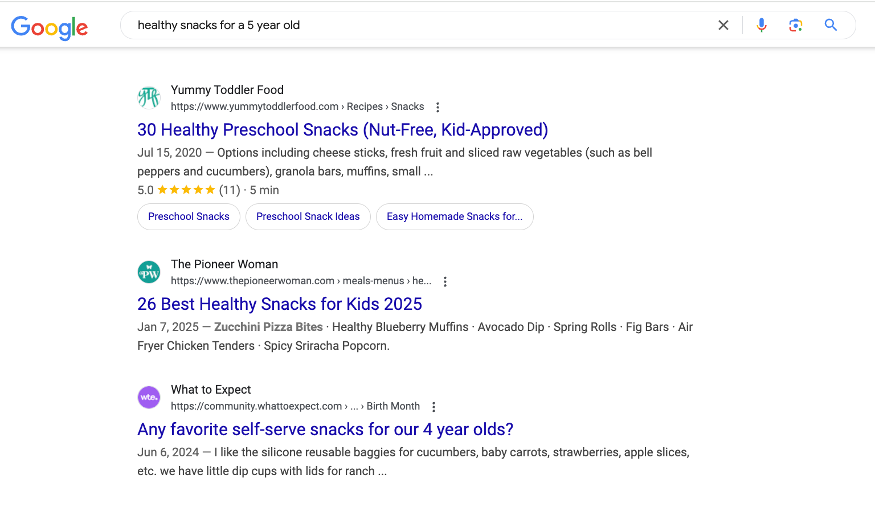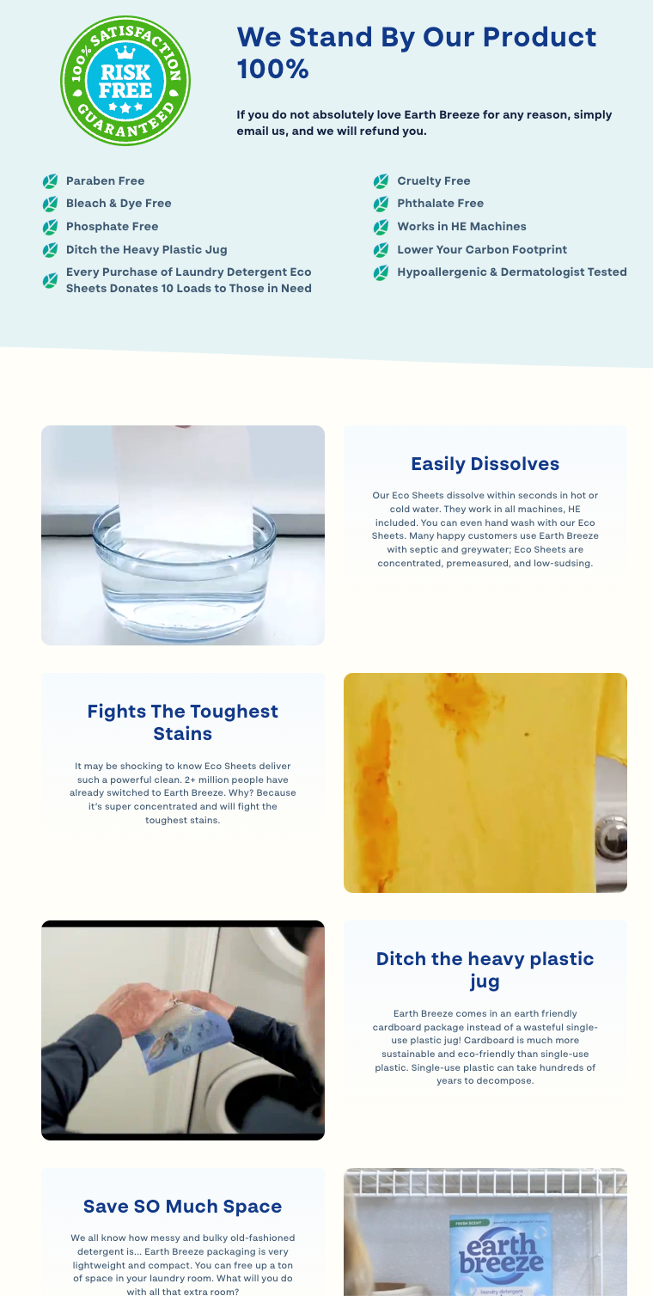How brands can get their products to appear in AI Chatbot results: Generative Engine Optimization (GEO)

Brian Hennessy
Talkoot Co-Founder & CEOAI chatbots like ChatGPT, Perplexity and Claude won’t be overtaking Google’s search dominance just yet. But it’s clear consumers are leaning on AI more and more to discover products online.
According to a 2023 SurveyMonkey study, 34% percent of consumers had already used an AI Chatbot to discover or learn more about new products.
And a 2024 study commissioned by Search Marketing company Botify found 55% of shoppers believe AI-powered search engines have the potential to make it easier to discover products.
Respondents in that study were also 2x more likely to say they would consider use AI Chatbots for shopping than any other activity, like keeping up with the news or finding an apartment.
So how can ecommerce sellers capitalize on AI-powered tools like ChatGPT, Perplexity, Claude and Google’s Search Generative Experience (SGE) to drive traffic to their product pages?
The answer to that question is the emerging practice of Generative Engine Optimization (GEO).
Just as SEO transformed how brands vie for Google rankings, GEO is about positioning your content to be the go-to answer when consumers research products on generative search tools. And just like with SEO, the early adopters will benefit most.
This post will break down what GEO is, how it differs from traditional SEO, and the top three strategies, including examples, you can use to optimize your product content for AI-driven product discovery.
What is Generative Engine Optimization and Why it Matters?
Generative Engine Optimization (GEO) is the practice of optimizing your brand’s content so AI-powered search engines and chatbots can find it and use it in their generated answers.
In simpler terms, it means ensuring that when someone asks ChatGPT a question like “What are some healthy snacks for a 5-year-old?” the AI will draw on your product content (and mention your brand) in its answer. GEO is about making your product pages, blogs, and digital shelf content relevant, trustworthy, and easy for AI to digest.
What’s the Difference Between GEO and Traditional SEO?
At first glance GEO sounds a lot like SEO – both involve optimizing your content so consumers can find your products online—but there are key differences in purpose, results and, therefore, optimization tactics:
Different Purpose
Traditional SEO aims to improve your ranking on search engine results pages (SERPs), so you appear in those familiar list of blue links.

GEO, on the other hand, aims to make your content the preferred source for AI-generated answers.

A good example of how brands can cut through the noise and appear prominently in chatbot results.
Different Results
In SEO, users get a list of roughly 10 results per page, giving brands multiple chances to appear.
In AI-driven search, the chatbot usually gives a single, consolidated answer (maybe with a few source citations). This means far fewer spots are available.
For example, Google’s new AI Overview might cite 2-3 sources at most in its answer snippet – if you’re not one of them, you’re effectively invisible for that query. GEO is about capturing one of those limited slots.
Different Optimization Tactics
SEO traditionally focuses on keywords, meta tags, and backlinks – all tactics that align with how search engine algorithms index and rank pages.
GEO focuses on content quality, structure, and context. Keywords still matter, but stuffing your content with exact phrases is less effective. Instead, AI looks for well-structured, readable, and authoritative product content that directly answers consumers’ questions.
Another way to look at it is that SEO is about pleasing the search algorithms, while GEO is about pleasing the shoppers using chatbots to research products.
Generative AI tries to deliver a complete, conversational answer to the user, often synthesizing info from various sources. The better your product content matches the complete, conversational answer the AI is looking for, the more likely it will be served up to the shopper.
Does my product information need to be included in the LLM training data to be included in chatbot results?
No, your product information doesn’t need to be part of a Large Language Model’s (LLM) training data to appear in chatbot results. Training data is static and doesn’t update in real-time, so if your product details weren’t included initially, the model won’t inherently “know” about them.
However, most of these chatbots now use Retrieval-Augmented Generation (RAG), allowing them to fetch current information from external sources during a query.
More and more these chatbots also have live web access mode, enabling them to pull real-time information from the internet when answering user queries.
All this is to say that well-optimized product pages significantly increase the likelihood of your product appearing in chatbot-generated responses.
Top 3 Strategies to Optimize Product Content for AI Chatbots (GEO)
How can consumer brands actually infuse GEO in their inbound product storytelling? Here are the top three strategies to make your product content chatbot-ready, along with examples and tips:
1. Create Rich, Helpful, Human-Friendly Product Content (Quality is King)
Generative AI craves content that is expert, trustworthy, and written for humans. In practice, this means you should write in-depth product stories that answer real questions and back up claims with evidence. That means:
Write Conversationally and Clearly: Ensure your product descriptions and articles are easy to read and use a natural, conversational tone. Even if you’re products are targeted at a much older demographic, aim for ~8th grade reading level. That is a comfortable reading level for most adults.
Answer Common Customer Questions: Think about the questions shoppers often ask and answer them directly in your content. Do people wonder “Is this juice gluten-free?” or “Is this dress appropriate for a wedding?” or “How do I use a protein powder post-workout?” Make sure those answers are on the product page (perhaps in a Q&A section or FAQ) so the AI can pull that information.
Demonstrate E-E-A-T (Experience, Expertise, Authoritativeness, Trustworthiness): In Google’s world, E-E-A-T is important for SEO, and it carries over to GEO. Ensure the content shows real expertise. Generative AI will omit content that seems spammy, superficial, or overly biased, e.g, “Our product is the best!”. Instead, it will choose content that demonstrates familiarity with the subject matter and confidence in facts, e.g., “According to research, glucose is absorbed by the body roughly 2x faster than fructose.”
2. Optimize Your Content Structure and Data (Make It AI-Readable)
Having an accurate, helpful product story is half the battle – the other half is presenting it in a way that AI systems can easily find and absorb. This is where structure and data formatting come in. You want to format your product content almost like an open book exam for AI: clearly labeled sections, structured data markup, and organized details.
Use Headings, Lists, and Bullet Points: Break up your content into logical sections with descriptive headings and use bullet points or numbered lists for key features. Generative models scan structured content for cues.
For example, if your website has a section titled “Health Benefits of Our Green Tea” followed by a short description of those benefits, an AI can quickly identify those points if a user asks “What are the benefits of Brand X green tea?”. Avoid long walls of text – they’re hard for humans and AIs to parse.
Organize Content by Common Queries: A pro tip is to organize sections of your page around questions users ask and use those questions as headings. For example, have a section “What does it taste like?” or “How do I use this product?” on the page.

The Earthbreeze product page does a great job structuring their product story into easily digestible chunks designed to address shoppers most common concerns and reasons to buy.
Not only does this improve UX, but it directly aligns with how people query chatbots (often in question form). Google’s own AI overview tends to extract snippet answers underneath relevant questions. Structuring your content this way can get you featured in those AI snapshots.
3. Keep Content Fresh, Personalize, and Adapt with AI in Mind
The digital shelf is not a “set it and forget it” situation – especially with generative AI evolving rapidly. This third strategy is a bit of a combo, but it boils down to staying proactive: keep your content fresh, leverage new channels and formats, and use AI tools to help you scale. Here’s how:
Keep Content Fresh and Up-to-Date: Generative engines prioritize current information. They don’t want to give users outdated recommendations.

People buy the same lightweight, low-key casualwear in the summer and winter. In the summer they’re looking for something to wear to a music festival, in the winter they’re likely looking for vacation outfit. Create content that speaks to both, like Nasty Gal, and you’ll drive more traffic to your PDPs throughout the year.
Ensure you update your product content regularly – not just when you have a new product, but periodically to add new insights, refresh dates, or incorporate the latest trends and keywords. Aim for reviewing and update key pages at least 2x a year.
Craft Content to Address Long-tail Searches: One advantage of AI chatbots is they often consider the user’s context and can even follow-up for clarification. While you can’t know each shopper’s context, you can create content that addresses many of the most popular “reasons to buy.”
For instance, thousands of people shop for a new phone every day, but everyone is looking for something a little different. Some are looking for longer battery life, some a better camera, still others might be looking for satellite connectivity in case of emergencies outside of cell tower range.

Apple famously has the longest, deepest product pages on the internet. They don’t expect anyone to read it all. But they do know people buy the same phone for different reasons, so they design their PDPs to speak to all the reasons people buy.
AI interprets shopper search intent and look for content that matches. If your product content doesn’t speak to all the most salient reasons customers buy your product, the AI won’t be able to recommend your products as a solution.
By covering multiple angles in your content (where relevant), you increase chances to match those long-tail queries that make up the majority of Google queries and, we can assume, AI Chatbots since users usually turn to Chatbots for more detailed queries.
This is somewhat similar concept to long-tail SEO keywords, but framed as longtail reasons to buy in your copy.
Embrace Omnichannel: Theme and repetition across retail channels can build your brand’s reputation in the eyes of AI. The content needs to match the requirements of each channel, but you also need to reinforce the same product story across all channels.
If the AI sees consistent storytelling about your product from multiple reputable sources, it reinforces trust.
This is true even if you’re sell exclusively on Amazon. Along with its own product catalog, customer reviews and community Q&As, Amazon’s new AI shopping assistant Rufus sources information from across the web to provide Amazon shoppers with personalized product recommendations.
Consistent, quality product storytelling across the web can now increase the likelihood your products are recommended on Amazon.
Don’t let anyone else own your product stories
Generative Engine Optimization for consumer brands means owning your product story across the web.
Brands that are succeeding are treating AI like a new type of customer—one that reads everything and needs things clearly spelled out.
They are curating the information landscape about their products, from their own site to retailer pages to third-party articles, so that wherever the AI looks, it finds consistent, deep and helpful product stories that match consumers’ reasons to buy.
Great advice, but how to get it all done?
Though daunting, this quantity of content is well within reach of most retailers without a significant increase costs or manpower.
But it will take new systems and ways of working, with teams leaning heavily into the new crop of generative AI tools to lighten the load.
Today, many of the world’s leading online retailers are already increasing traffic, conversion rates and sales with Talkoot.
Talkoot is an Agentic AI Production Platform featuring hundreds of specialized AI agents built to perform each step of the product content production process to a high level of accuracy and quality—from data enrichment and keyword research to generating on brand, retailer optimized product content.
Talkoot helps many of the world’s most loved brands 5x their ability to create deeper, more valuable product stories at every customer touchpoint, including AI Chatbots.
To see how Talkoot can do the same for your brand, get in touch with one of our consultants.
See how you can streamline your content production process.
Book a demo >
See how leading brands are using Talkoot to increase conversion and get product content to market faster.
Book a demo >
See how leading brands are using Talkoot to increase conversion and get product content to market faster.
Book a demo >
